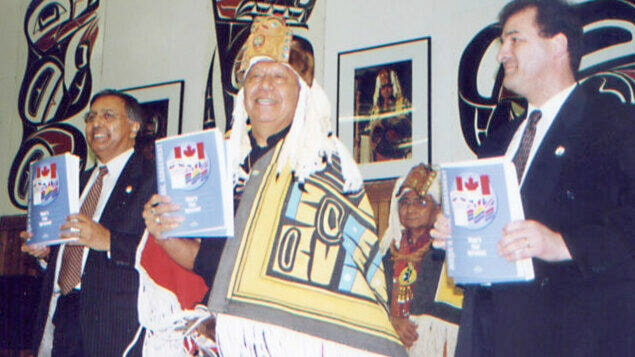A continuing disagreement over territorial overlaps between the Nisga’a Nation and a group of Gitanyow people has surfaced in the B.C. Supreme Court.
The Nisga’a Nation is asking for an injunction ordering a group calling itself the Raven Clan Outlaws to stop activities within a portion of the Nass Wildlife Area, an area that was created through the Nisga’a Treaty of 2000.
The wildlife area is not part of the core lands over which the Nisga’a have ownership but Nisga’a citizens have hunting and harvesting rights within its boundaries through the treaty.
But now the Nisga’a are saying the Raven Clan and others have “wrongfully interfered with and continue to wrongfully interfere with the Nisga’a Nation’s constitutionally protected rights under the Nisga’a Treaty.”
The Nisga’a specifically point to activities at what the Raven Clan calls the Ravens Nest Ranch, a small settlement along the Cranberry Connector, a rough road that connects the Nass Valley Nisga’a homelands with Hwy 37 North and Gitanyow lands to the east.
In their filing, the Nisga’a state there’s logging going on, a farm underway, livestock raising for sale and the cannabis growing.
They also say no provincial permits have been sought or issued regarding Raven Clan Outlaws activities.
According to president of the Gitanyow Hereditary Chiefs Simogyet Malii, (Glen Richards) the timing of the lawsuit was planned to catch the Gitanyow off guard.
“The timing of this deliberate move, amidst the holiday season when our offices are closed and our community is focused on family, adds a layer of cruelty to an already challenging situation,” said Malii.
Malii said the lawsuit represents a continuation of “historical injustice” towards the Gitanyow since the 2000 Nisga’a Final Agreement. He said the federal and provincial government have neglected the Gitanyow’s territory claims in the treaty process.
“The amount of land claimed by the Nisga’a increased nearly fivefold in thirty years, representing an 84% overlap of Gitanyow territory. Despite our loud and legal opposition to the ever-expanding Nisga’a boundary, British Columbia’s first modern-day treaty was signed and celebrated,” said Malii.
Websites attributable to the Raven Clan Outlaws lay out a series of commercial activities either underway or planned within an area called the Wilp Gamlakyeltxw.
The websites further say the Raven Clan does not recognize provincial or federal legislation on traditional lands and does not need permits to harvest resources on traditional lands.
This is not the first time the Nisga’a and Gitanyow have faced each other in court over land rights and title.
After the Nisga’a Treaty came into effect in 2000, the Gitanyow Hereditary Chiefs went to court over moose hunting quotas within the Nass Wildlife Area.
The Gitanyow felt the provincial government gave too many moose to the Nisga’a, something that affected their rights. But the minister responsible disagreed with a counter-proposal from the Gitanyow, saying it would violate Nisga’a treaty rights.
The minister used the same rationale in saying consultation with the Gitanyow was not needed for a Nass Wildlife Area management plan as the plan only involved Nisga’a citizens and so could not affect Gitanyow rights.
The B.C. Court of Appeal ultimately ruled that the province acted appropriately in this situation of a treaty right conflicting with an unrecognized Indigenous right.
The Gitanyow position on rights with the Nass Wildlife Area remains outstanding and no further trial has been held.
